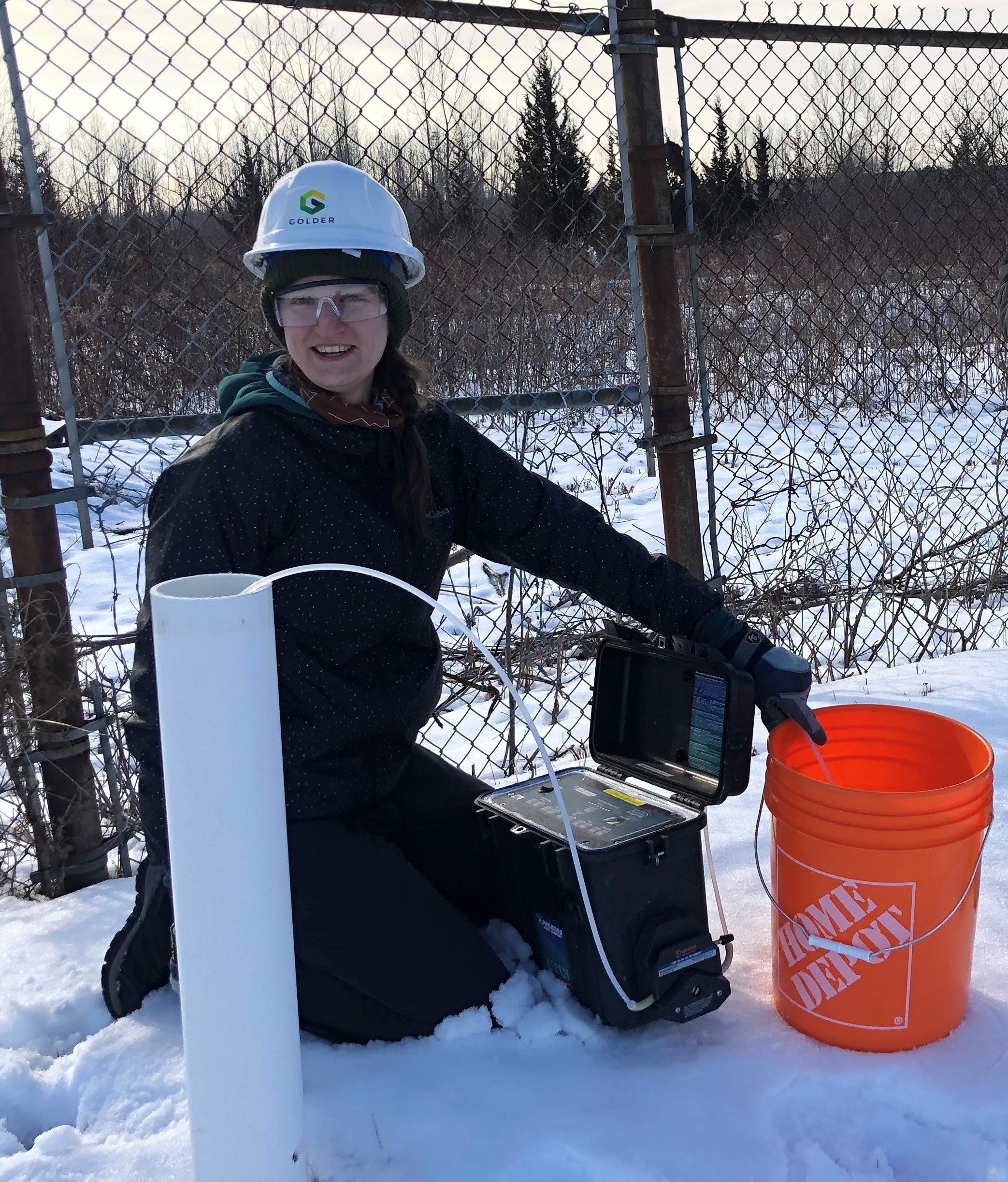
Steph Slowinski is a Research Biogeochemist within the Ecohydrology Research Group at the University of Waterloo. The lab is run by Dr. Philippe Van Cappellen who is the Principal Investigator on the Microplastics Fingerprinting project.
The Microplastics Fingerprinting project team consists of over 25 faculty members, masters and PhD students, and support staff from various disciplinary backgrounds. We recognize this diversity as a strength that enables an interdisciplinary and holistic evaluation of the challenges and solutions associated with microplastics. Each issue of our newsletter will feature one of the project’s excellent researchers.
Steph plays a critical role as a support staff member for work packages 2 and 3, which are working to develop a watershed-scale mass balance describing where microplastics are coming from and where they are ending up in the Grand River watershed. They are also trying to understand how climate change may impact fluxes in this mass balance. Steph contributes to this work by coordinating lab and field activities related to sampling soil, sediment and water in the Grand River watershed. She also collaborates with the larger research team to characterize the abundance, types and sizes of the microplastic samples as well as conduct lab experiments designed to understand the processes controlling microplastics transport in soils.
Steph received her BSc and MSc in Environmental/Earth Sciences from the University of Waterloo. While she was pretty sure she wanted to study earth sciences, taking her first geochemistry course in university made her realize that biogeochemistry – understanding how humans impact the cycling of elements such as carbon, nitrogen and phosphorus – was what she was most interested in. Since then, she’s been able to realize these goals through her involvement in various projects that examine issues such as the impacts of urbanization on phosphorus loads to Lake Ontario, hydrocarbon biodegradation in contaminated soils, and how chemical energy controls microbial activity in soils and groundwater. Within the Microplastics Fingerprinting project, she is looking forward to seeing how the results can be used to better understand how microplastics move throughout the watershed and where they tend to be deposited. This will be valuable information to help mitigate microplastic pollution. Steph’s expertise in watershed hydrology, biogeochemistry, and contaminant fate and transport will be well utilized in this project to address interdisciplinary questions about microplastics pollution.